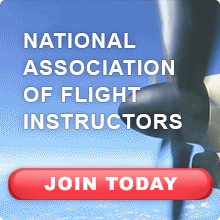|
More About Waypoints
Last week's discussion about Santa using his reindeers' names as navigation fixes prompted a conversation with NAFI's Director of Publications and Editor David Hipschman. He asked if I knew of any good names, and I came up with a few. This prompted him to do a little digging and he found a couple of fun articles, one by Mark Vanhoenacker in Conde Naste Traveler and another by Ken Hoke at AeroSavvy.
Both point out that waypoints have to be five characters, unique, and pronounceable by human beings. I'll agree with that to a degree. I remember when the RNAV (GPS) 15 approach into Washington, Missouri, was first published. I was up with a student and told the controller we wanted the procedure turn, carefully omitting the fix name, hoping I'd learn from him how to pronounce it. His response was "Cessna 123, cleared direct to E-QUACKS, er, E-KACKS, uhhhh.... Echo, Quebec, Alpha, X-Ray, Oscar!" Well, that certainly cleared that up! For the record, about 15 years later, I still have no idea how to say it.
Of course, there are those that are pronounceable, even if the spelling is odd. For example, there's KUBBS on V84, near my hometown of Chicago, WARBD on the 139 radial of the OSH VOR, or BEEFF, the final approach fix on the ILS 32R into Omaha. The chart makers are obviously inspired by landmarks or other noteworthy things in relation to the waypoint. Sometimes, a bit of humor is involved. I have a low level IFR chart for the St. Louis area that shows what is now called AUGST intersection was once called COORS. I'm sure you've all heard of the RNAV (GPS) 16 at Portsmouth International (KPSM). The waypoints, including the fix for the missed approach and holding point are, in order, ITAWT-ITAWA-PUDYE-TTATT-IDEED. Another procedure with both a bit of humor and local flavor is the PIGLT FIVE (RNAV) arrival into Orlando (KMCO). I'll leave it to you to look that one up, but be warned - you need to be up to speed on your Disney characters.
Not all are humorous. I fly the airlines into DC on business fairly often, and like many of us, I follow along on my iPad to stay sharp. Often, we're cleared into Ronald Reagan-Washington National via the FRDMM FOUR (RNAV) arrival. The waypoints are poignant: HONNR-BRVRY-COURG-PLDGE-WEWIL-NEVRR-FORGT-SEPII. That one strikes a chord with me every time.
My favorite waypoint, however, is one involving a late friend. Jim Byrnes was a well-loved instructor and designated examiner in the St. Louis area, with a distinguished career dating to before World War II. Because of his many achievements, the FAA honored him by naming the final approach fix on the VOR 18 approach "BYRNS" in his honor in 1999. Before he passed in 2002, we would often hear Jim announcing on the radio "me - inbound." And whenever I saw Jim, I would tell him I owed him a quarter for each time I'd used "his" intersection while training a student or practicing.
If you want to have some fun with your students, see if you can find some of these aviation gems. A good tool to use is AirNav's "sounds like" feature. The exercise might add some spice to your lesson plans.
Bob Meder,
NAFI Board Chair
|






